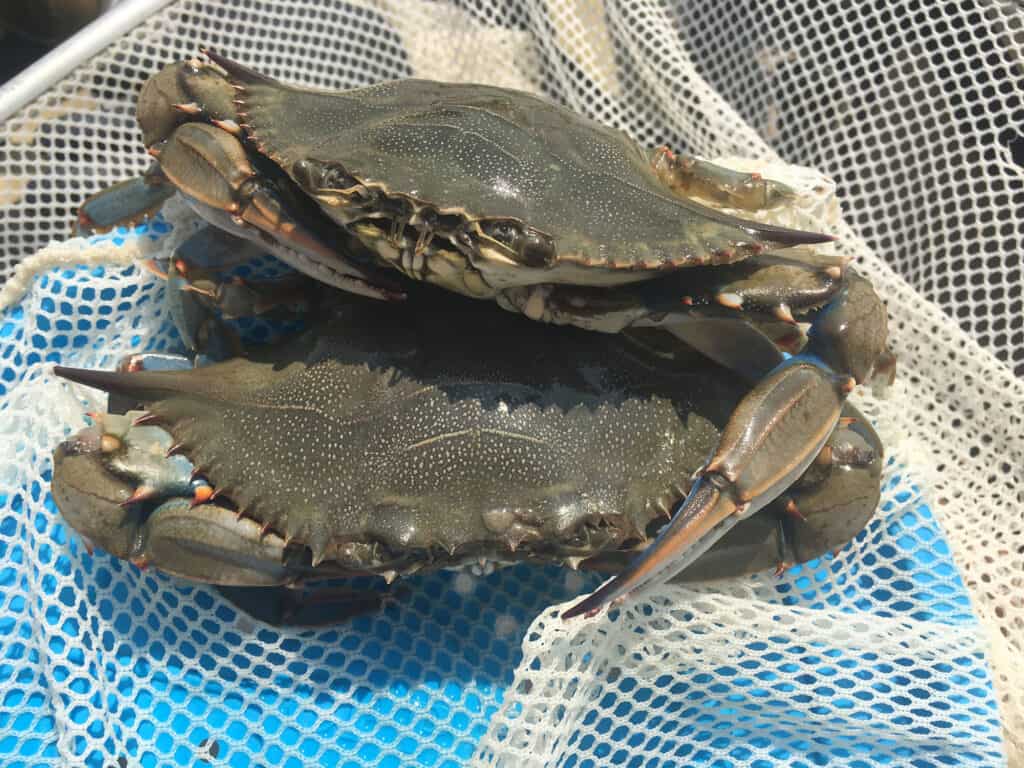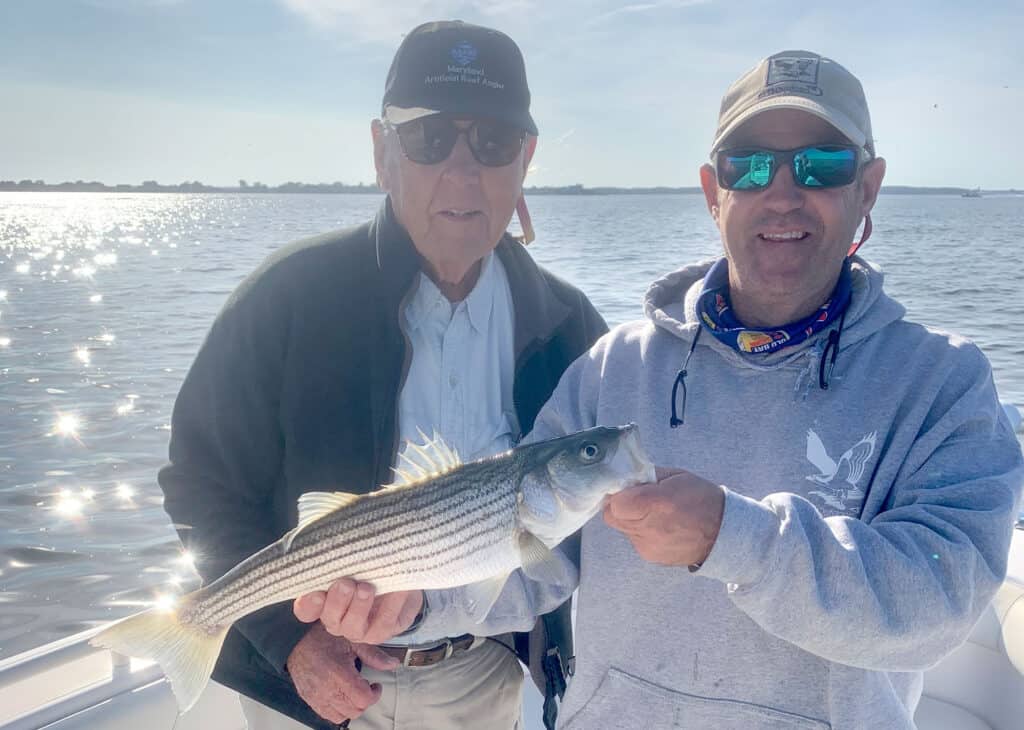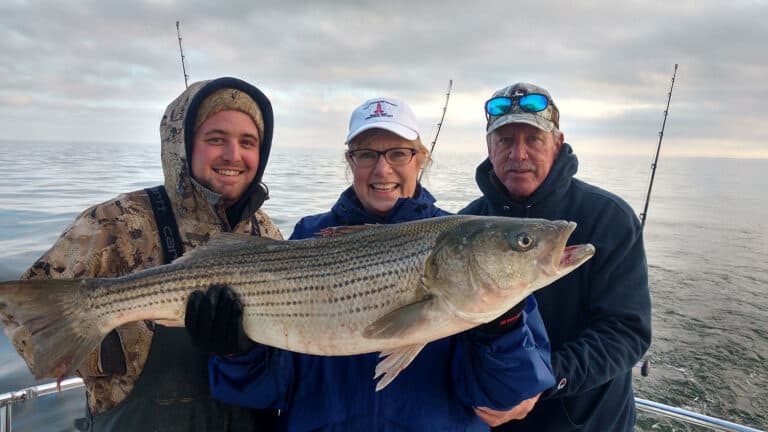We’re far from out of the woods, but at this point we’ll take what we can get. After three years of dismal population estimates of the Chesapeake’s venerable blue crab, fishery managers announced an encouraging uptick in numbers revealed by the Bay’s annual winter dredge survey, conducted cooperatively by Maryland and Virginia since 1990. This is cautiously good news, a much-needed jolt after crab numbers suffered through two of the worst recruitment metrics in the survey’s history.

Biologists with Maryland Department of Natural Resources (DNR) and the Virginia Institute of Marine Science estimate there are 323 million blue crabs in the Bay in 2023, a considerable bump from last year’s low of 227 million crabs. The number of spawning age female crabs also increased from 97 million crabs in 2022 to 152 million crabs in 2023, and adult males nearly doubled from 28 million crabs last year to 55 million crabs this year.
And while fishery managers are encouraged by the increases in adult crab abundance, they caution that vigilance is required given how low recruitment (spawning success) numbers have been in several years. In fact, there has not been a strong year class since 2019 despite maintaining the spawning stock at a level that’s capable of producing one.
After three consecutive years of low juvenile abundance, it was all hands on deck last fall as managers and scientists scramble to figure out root causes of the poor recruitment and come up with viable solutions to buoy the stock of one of the Bay’s most valuable and popular fisheries.
One thing fishery managers did was tighten regulations to reduce harvest pressure. Another key decision was to initiate a plan for a new stock assessment, which will kick off later this year with a workshop coordinated by the NOAA Chesapeake Bay Office and funded by the U.S. Environmental Protection Agency. Experts say taking a deep dive into the ecology of this species, how it is modeled, and whether to revise reference points used for management is imperative to turning the tide.
The continued scourge of poor water quality combined with habitat loss, especially seagrasses, a critical nursery for juvenile blue crabs, drives down abundance. Factor in the spread of voracious blue catfish, especially in the upper Bay’s prime crabbing grounds, and problems are exacerbated.
Maryland Sets New Rockfish Regs; ASMFC Schedules Public Hearings
By now you’ve heard that rockfish managers took emergency action to set new size limits on the striped bass fishery to curb a worrisome uptick in catches. Earlier this month, the Atlantic States Marine Fisheries Commission capped the maximum size limit for most striped bass fisheries at 31 inches. Commissioners also voted to initiate the process to adopt Addendum II to the striper fishery management plan. The goal of the Addendum is to reduce mortality in both the recreational and commercial fisheries, most likely through changes to recreational size limits, season closures, and maximum size limits.

Called rockfish by those of us on the Bay with gray hair and stripers by almost everyone younger or north of Cape Charles, one of the nation’s most popular and important fish faces stiff headwinds toward recovery. Chief among them is poor spawning; 2015 was arguably the last solid class of new fish, and those are the ones the new size limit is designed to protect.
Stripers are estimated to generate $7.8 billion annually in economic output throughout their East Coast range. It’s impossible, however, to put a dollar value on this fish’s cultural importance to Chesapeake and coastal communities.
Reducing the size to protect the spawners – especially that 2015 year-class – is a necessary step that needs to extend to the commercial fishery, especially Virginia’s spring gill net fishery at staging areas like the mouth of the Potomac. Maryland also should look hard at the rule allowing anglers on charter trips to keep two (2) rockfish per person per day, as long as the captain is enrolled in DNR’s FACTS electronic reporting system.
CCA Maryland Executive Director David Sikorski is Maryland’s legislative appointee to the ASMFC’s striped bass management board. He’s spot on when he says, “Controlling coast-wide fishing mortality is the key to rebuilding striped bass abundance to levels the public expects and deserves. It is also important to recognize, however, that striper recruitment issues related to successive poor spawns, coupled with an expanding blue catfish population in Chesapeake Bay will continue to complicate the longer-term trajectory of this iconic fishery.”
For years I’ve argued that we’re already experiencing a paradigm shift, and as such we need to manage our expectations about this iconoclastic fish and fishery. The halcyon days of the early 00s are unlikely to come back. If we share the pain now, however, we may have a more stable and predictable fishery in future years.
So, we’ve reached yet another historic point in rockfish management. Anyone who fishes for them, sells gear to catch them, or loves to eat them at a restaurant needs to step up and let decision makers know protecting and rebuilding the fishery is paramount. Become part of the solution, not just gripe and whine on social media. Speak up at the public hearings via webinar. Register at asmfc.org.
- Monday, May 22, 6 p.m. to 8 p.m.
- Tues. May 23, 5 p.m. to 7 p.m.
- Wed. May 31, 6 p.m. to 8 p.m.
Don’t Miss Episode 2 of Chesapeake Perspective!
CCA and its partners are hosting Season Two of Chesapeake Perspective with three thought-provoking seminars sure to spark innovative and move forward solutions to some of the most pressing issues confronting Chesapeake recreational anglers.
Moderated by FishTalk Angler-in-Chief Lenny Rudow, Episode 2 is entitled “Expanding Angler Access” and airs at 7 p.m. on June 15. A lively discussion by an expert panel, each an industry leader from the Chesapeake and Atlantic region, includes Q&A with the public during the live stream via Facebook on YouTube. The third show in the series takes place on Sept. 21 at 7 p.m. with “Habitat Preservation and Restoration.” Registration is free.

Capt. Chris C. Dollar
Chesapeake native Captain Chris Dollar is a lifelong conservationist, outdoor columnist and fishing outfitter with nearly 30 years' experience avoiding office work.


